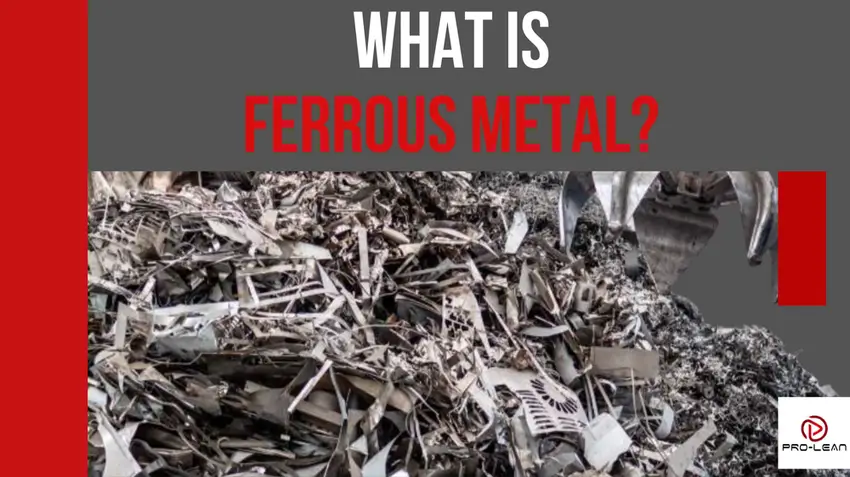
What is Ferrous Metal?
Ferrous metals like steel, cast iron, and wrought iron are prominent in many industries owing to attractive properties, including durability, magnetism, strength, and versatility. It is understandable why humans have been using them for over 5,000 years, and there is no sign of this changing.
The iron content is the mainstay of the properties of ferrous metals. The metals are widely used in construction, ships, cars, and even in smaller items, for instance, smartphones. This article is about the incredible metal category, delving into the different types of ferrous metals, the main properties, and applications.
What Is A Ferrous Metal Definition?
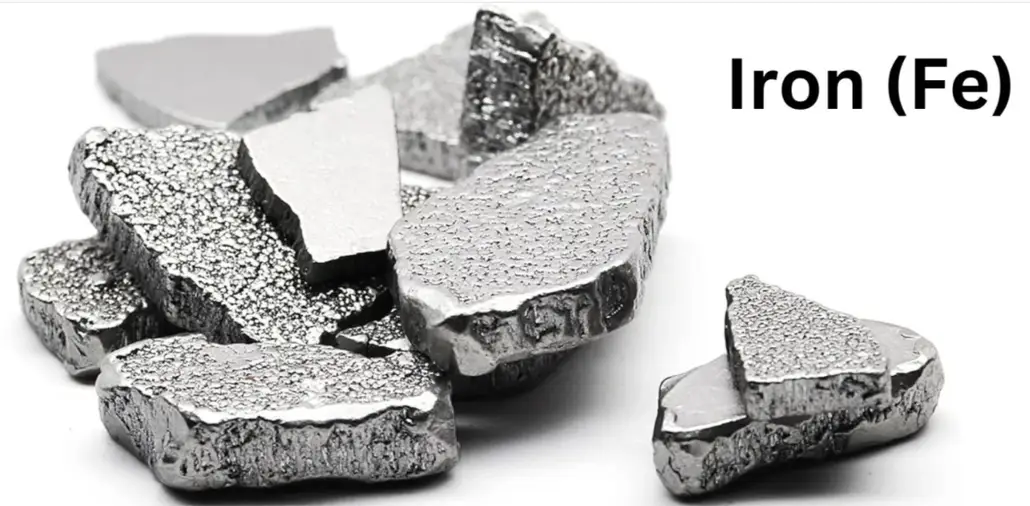
Iron materials
A ferrous metal is defined as a type of metal that contains iron. Its name comes from the Latin word ‘ferrum’, which directly translates to ‘iron’. This type of metal emerged in the 1200 BC era, which concurs with iron manufacture and the Iron Age.
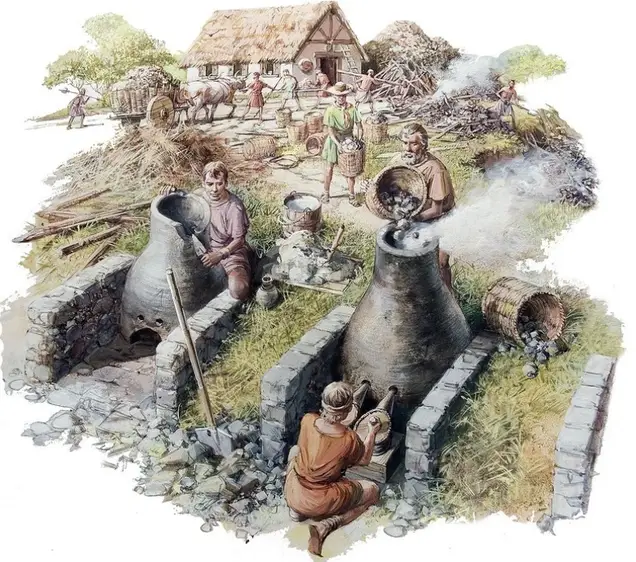
Metallurgists during the Iron Age
Various types of iron metals are widely used in general industry, construction, and many other industries due to their excellent properties of strength, durability, and versatility. One of the most popular ferrous metals is steel, a material that is largely iron with a very small amount of carbon.
Steel parts are common in CNC machining projects at ProleanTech.
What Is A Non-ferrous Metal?
An analysis of ferrous metals is incomplete without a mention of non-ferrous metals, which are a different category defined by a lack of iron content. This makes them significantly lighter and malleable compared to ferrous metals.
The definition of non-ferrous metals appeals to critical industries such as aerospace, where strength is required, but weight is also a big factor. Examples of popular non-ferrous metals include aluminum, copper, and zinc, all of which are widely used in various industries.
What are non-ferrous alloys?
A non-ferrous alloy is a blend of two or more non-ferrous metals. They may sometimes contain small proportions of ferrous metals. The idea of non-ferrous alloys is to build on the good qualities of the base metals – corrosion resistance, strength, machinability, and so on. This reinforces the idea that examples of ferrous metals and non-ferrous metals are all crucial in the industry.
Properties Of Ferrous Metals
What makes ferrous metals unique? Ferrous metals are renowned for excellent tensile strength, high durability, magnetism, electrical conductivity, recyclability, and low corrosion resistance.
Silver-like Appearance
Ferrous metals usually have a silver-like appearance, but will often have a reddish-brown color due to rust formation on exposure to the atmosphere.
High Tensile Strength
High tensile strength is easily the most marketable property of ferrous metals. This iron characteristic measures a material’s capability to undergo stress before it breaks or fractures. Ferrous metals often give better results in this area compared to non-ferrous metals.
The Iron Carbon Phase Diagram, which represents the phase properties of different metals, can be used to predict the strength.
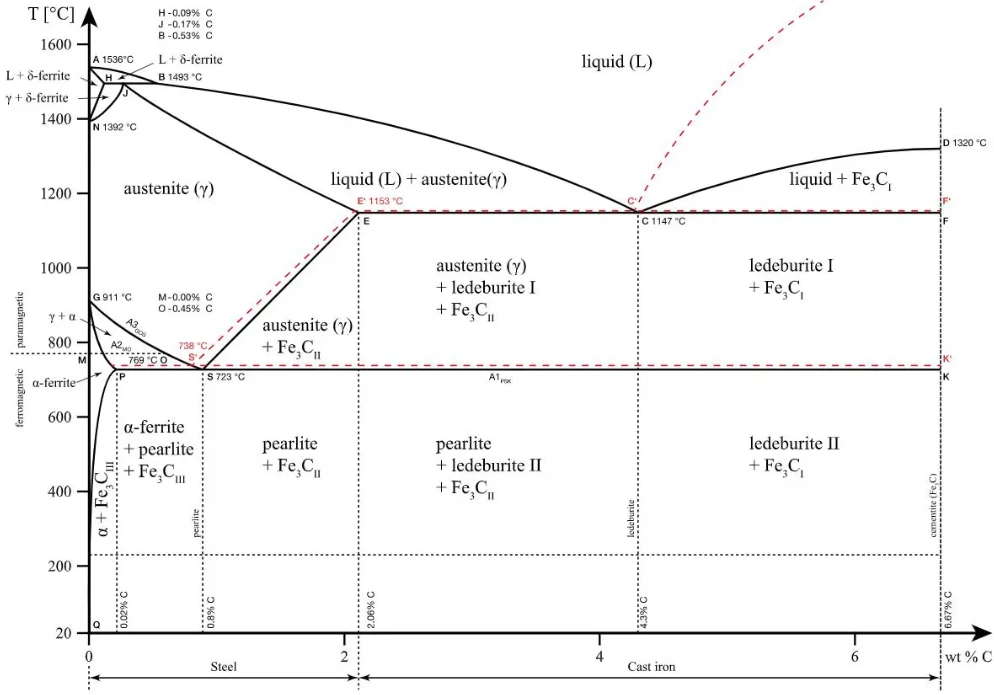
Iron-Carbon Phase Diagram
High Durability
This is another prominent property of ferrous metals, one that appeals to numerous industries, including construction. These metals are built to last, mostly due to their strength and the ability to develop corrosion resistance. They can maintain their integrity in the face of punishing environments, for instance, high loads.
Magnetism
The iron content in ferrous metals makes the materials magnetic. This means that these materials can be easily magnetized, a property that is interesting for automotive, transportation, navigation, and electronics industries.
Electrical Conductivity
Ferrous metals are electrically conductive thanks to the charge-carrying delocalized electrons. This property may not be the best, but it is still applicable in some situations. For instance, the metals rely on the property in welding, resistance heating elements, and electromagnetic applications.
Recyclability
Although not as easily or straightforwardly as in non-ferrous metals, ferrous metals are recyclable. Like any other metal, the type of alloy in a ferrous metal can determine how easy the recycling process turns out.
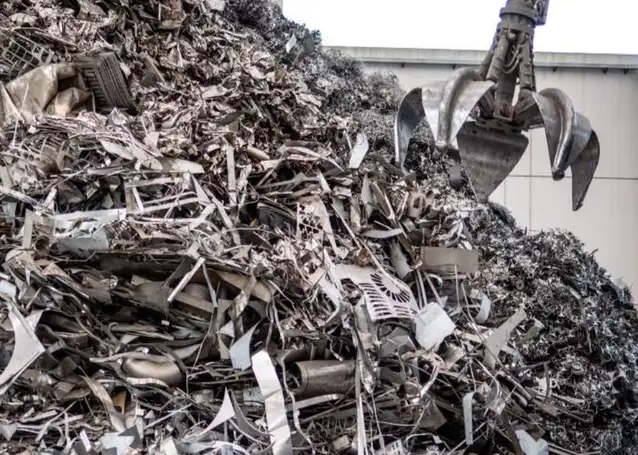
Ferrous metal recycling
Recycling companies have resorted to advanced sorting technologies to separate metals and alloys for easier recycling.
Low Corrosion Resistance
Partly because of the carbon content, the proneness of iron to rust, ferrous metals are notorious for reacting to oxygen and water. They tend to have the rust damage problem, which can be challenging in many projects.
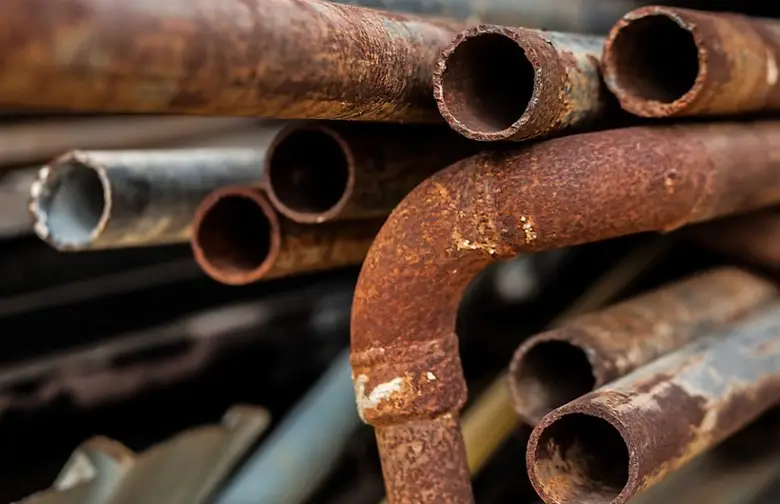
Corrosion in ferrous metals
However, there are good exceptions in options like stainless steel, galvanized steel, and wrought iron. Stainless steel has chromium, which forms the self-regenerating chromium oxide. Galvanized steel creates a protective zinc coating, which can keep off oxygen or water.
Try Prolean Now!
Pros And Cons Of Ferrous Metals
With a wide range of ferrous metal options, many pros and cons are expected. The pros include corrosion resistance, tensile strength, and durability. The limitations of ferrous metals are high weight, a requirement for high heat to process, and the relatively high cost.
The Pros Of Ferrous Metals
Ferrous metals present the following advantages in projects:
- High tensile strength
- High durability
- Widely available
- Recyclable metals
The Cons Of Ferrous Metals
The limitations of ferrous metals include;
- Heavier than the alternative metals
- Vulnerable to oxidation and rusting
- Can be brittle over time
Types Of Ferrous Metals
The most prominent ferrous metals examples are alloy steel, carbon steel, cast iron, wrought iron, and stainless steel.
Cast Iron
Cast iron is a hard and wear-resistant ferrous metal popular in the manufacture of machine tools, plumbing equipment, and cookware. There are different types of cast iron, including gray, white, and ductile.
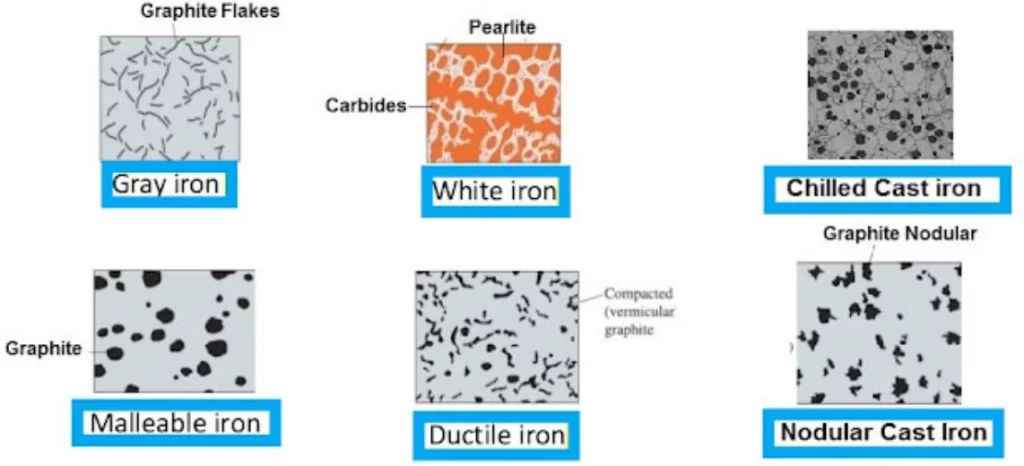
Types of cast iron
Cast iron has superior casting capabilities, good machinability, high wear resistance, and is relatively affordable. However, it is prone to rust, has a low strength-to-weight ratio, and is relatively difficult to machine.
Wrought Iron
Wrought iron is a ferrous metal that is produced through the heating of iron ore in a furnace. It is oxidation- and rust-resistant, a property that distinguishes it from most other ferrous metals. Wrought iron is most recognizable for its use in rails and fences.
Wrought iron is one of the ferrous metals with a long history, having been widely used in traditional ornaments and architectural applications.
Stainless Steel
Steel is very popular for its machinability, toughness, and durability. Its CNC-machined parts are rampant in many industries, from construction to automotive, and transportation to manufacturing. Steel can be subdivided into several categories: Carbon steel, stainless steel, and alloy steel.
Stainless steel is a popular category of steel with versatile applications, and whose durability and strength properties are beneficial in many industries. Corrosion resistance is also a key characteristic of this ferrous metal.
Carbon Steel
Carbon steel is cost-effective, durable, and strong, thus very common in industrial applications. Although the metal contains iron and carbon, different mechanical properties can be achieved by different carbon percentages. This metal can be further categorized as low-carbon steel, medium-carbon steel, and high-carbon steel.
Alloy Steel
Alloy steel has alloying elements for enhanced properties, such as heat resistance, wear resistance, corrosion resistance, and strength. This ferrous metal is therefore present in engine parts, structures, and aerospace parts.
Ask for a quote for different parts from these and other ferrous metals.
Applications Of Ferrous Metals
High tensile strength, corrosion resistance in some varieties, and durability are valuable properties in many areas, as can be proven from the many applications of ferrous metals. These applications range from construction to cutlery.
Construction And Machinery
Construction and machinery applications requiring strong and versatile parts benefit from the corrosion resistance and strength of ferrous metals, cast iron being a perfect example.
These iron material characteristics are valuable in parts such as engine blocks, cylinder heads, and others.
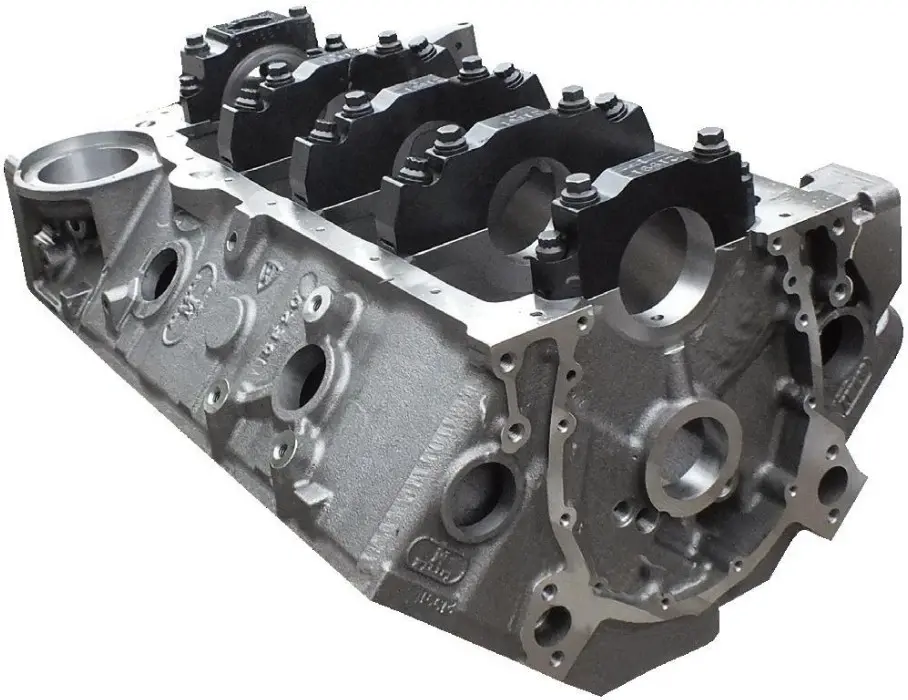
Cast iron engine block
Engineering Applications
Many engineering applications require excellent formability and weldability. Ferrous metals with minimal traces of carbon, for instance, mild steel, are suitable in such applications. The material is not only ductile but also has adequate strength for many applications.
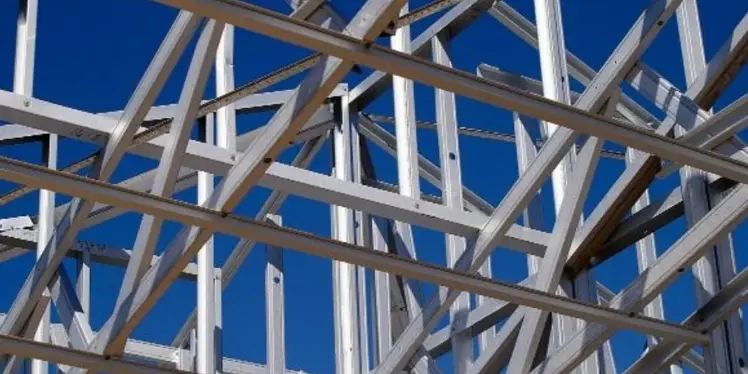
Mild steel structure
Structural And Connecting Components
Structural and connecting components require a rich blend of ductility, malleability, and toughness. Ferrous metals rich in iron content are the best in such situations.
Consider an option like wrought iron, which is almost 100% iron, so it is tough, ductile, and malleable. Although it has since been replaced by mild steel, you may still come across its parts that include couplings, chains, fences, and rivets.
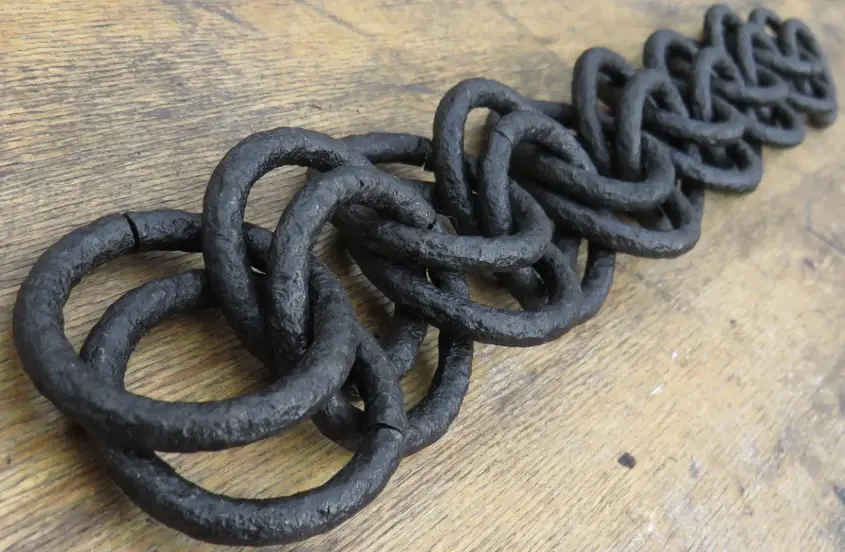
Wrought iron chain
Tools And Mechanical Components
Mechanical components and tools requiring cutting and machining excellence benefit from the capabilities of ferrous metals, carbon steel to be precise. The most notable ferrous metal is carbon steel, which is used for cutting tools such as drill bits and saws.
However, that’s mostly for high-carbon steel, which is less ductile but very hard and wear-resistant.
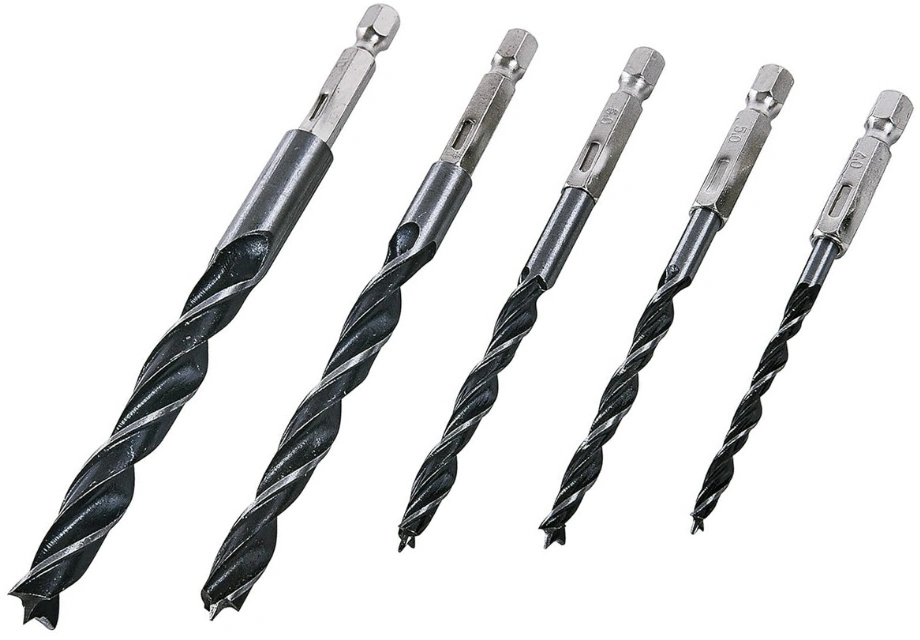
Carbon steel drill bits
Low-carbon steel is malleable and ductile, hence suitable for metal prototyping applications. A stronger variety is mild carbon steel, but it can be used for the same applications.
Since medium carbon is still stronger and less ductile, it suits applications like gears and crankshafts, which require higher strength and wear-resistance.
Corrosion-Resistant Products
The corrosion resistance of stainless steel is excellent for cutlery and appliances, among many other products. Note that there are several grades of stainless steel, each with a different level of corrosion resistance.
The guide on CNC Machining Explained shows some ways of processing metals, ferrous metals included, to make usable parts.
Try Prolean Now!
Selection Guide For Types Of Ferrous Metals
While deciding to use ferrous metals is a good starting point, it is noteworthy that not all ferrous metals are the same. These metals differ in weight, corrosion resistance, machinability, cost, and other important aspects. Therefore, consider the following areas when choosing a specific ferrous metal for your project.
Corrosion Resistance
Will the ferrous metal withstand corrosive elements? While some ferrous metals are prone to corrosion, some are very good at warding it off. Stainless steel is a perfect example, with its corrosion resistance significantly higher compared to alternative ferrous metals.
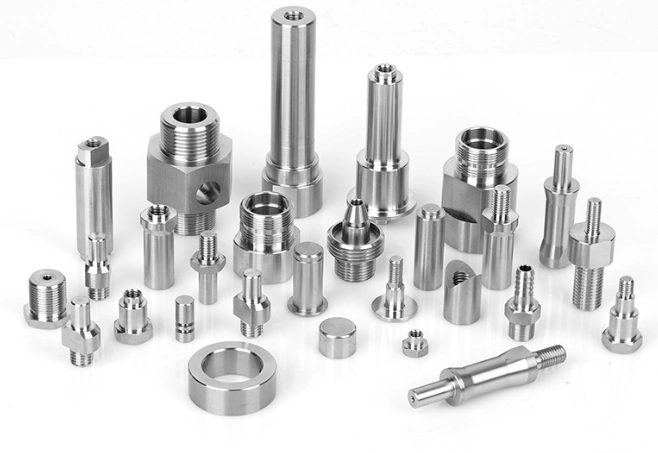
Stainless steel parts
Electrical Conductivity
Consider also the electrical conductivity of a metal. Among ferrous metals, this property is not as impressive as in the list of non ferrous materials, but it can still be used to select one metal over another. The highest electrical conductivity is in pure iron, while high-alloy steels or tool steels have the lowest values.
Formability
When your project involves forming processes such as hot extrusion or hot forging. The formability of the metal will have to be top-notch for the process to be successful or less strenuous.
Wrought iron is at the top in this regard, but low-carbon steels and medium-carbon steels can also be considered.
Machinability
If you are looking for a ferrous metal that can be cut easily, the options under ferrous metals are satisfactory. Stainless steels, alloy steels, carbon steel, and wrought iron can all be used to make CNC-machined parts.
Strength
Ferrous metals are renowned for their high tensile strength, but high-carbon steels are at the apex. The high carbon content makes these metals extremely strong and suitable for springs and related applications.
Welding
Choose low-carbon steels for welding ease. The low carbon content means that these metals do not form brittle microstructures easily. Welding becomes more difficult with more carbon content.
Weight
Ferrous metals with the highest carbon content tend to be very heavy. Cast iron is very heavy for this reason. If you are looking for lighter ferrous metals, consider options like low-carbon steel and wrought iron.
Cost
Stainless steel is easily one of the most valuable ferrous metals, mostly because of its chromium content. Corrosion resistance is a big selling point in industries, so this preference is understandable. More affordable ferrous metals include mild steel, gray cast iron, and wrought iron.
Read more:
In Conclusion
With versatility, strength, and other good qualities, it is understandable why ferrous metals are widely used. They may be relatively heavy, expensive, and heat-intensive, but these challenges are often outdone by the many positives.
Whether you are looking for parts made of stainless steel, carbon steel, alloy steel, cast iron, or any other ferrous metal, there is no better place to get excellent CNC machining services than at ProleanTech.
Contact us today!

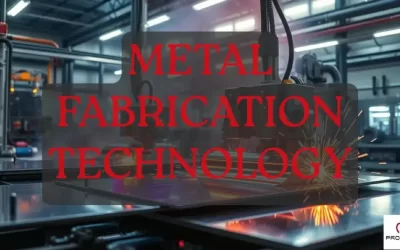
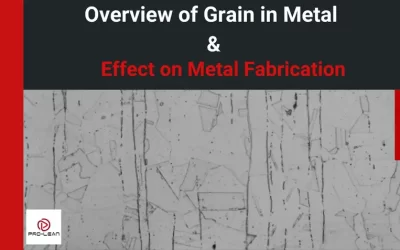
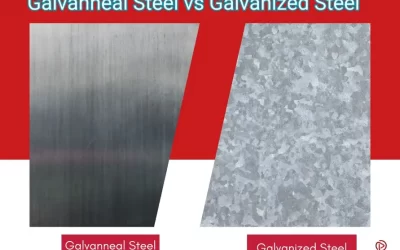
0 Comments